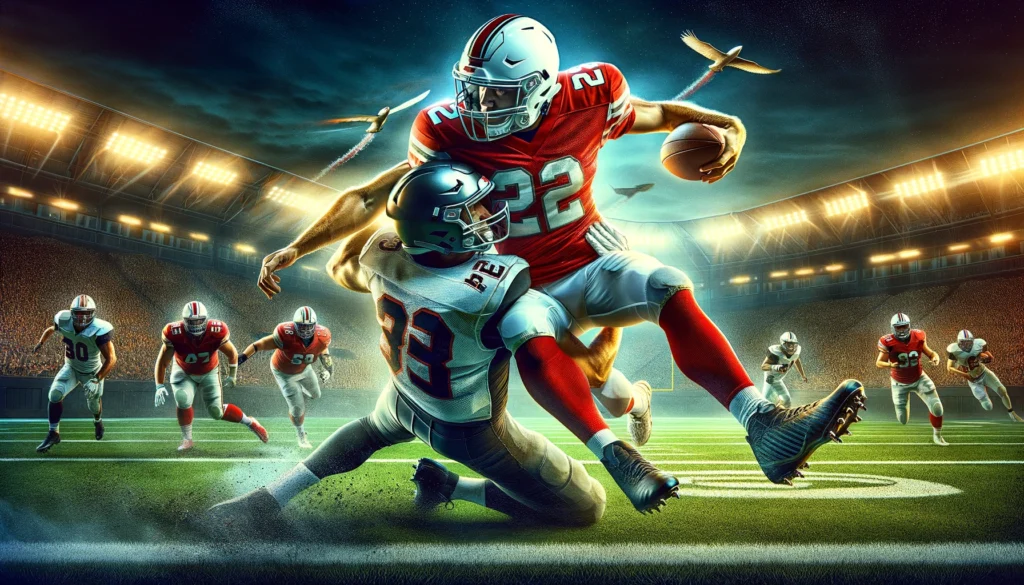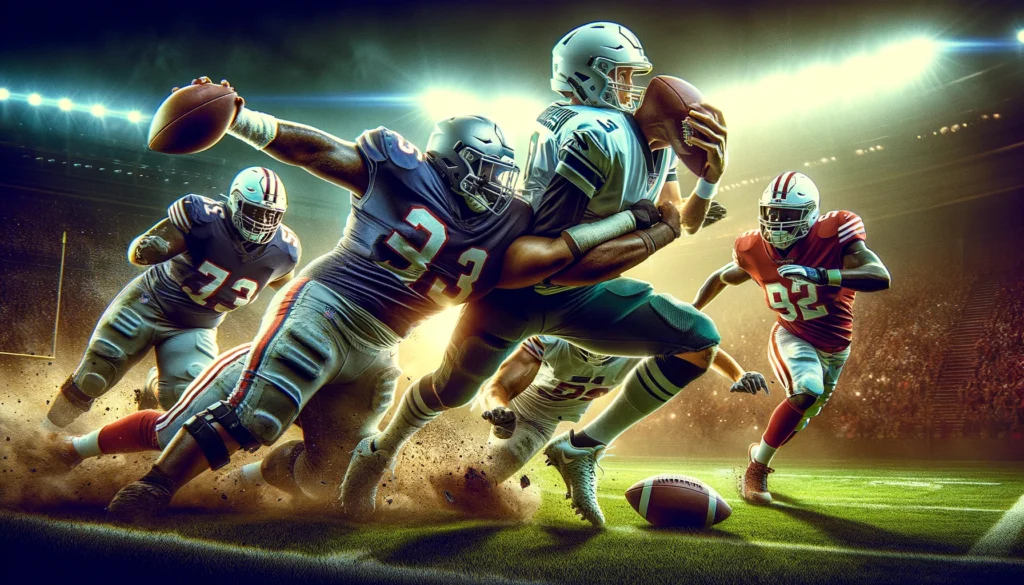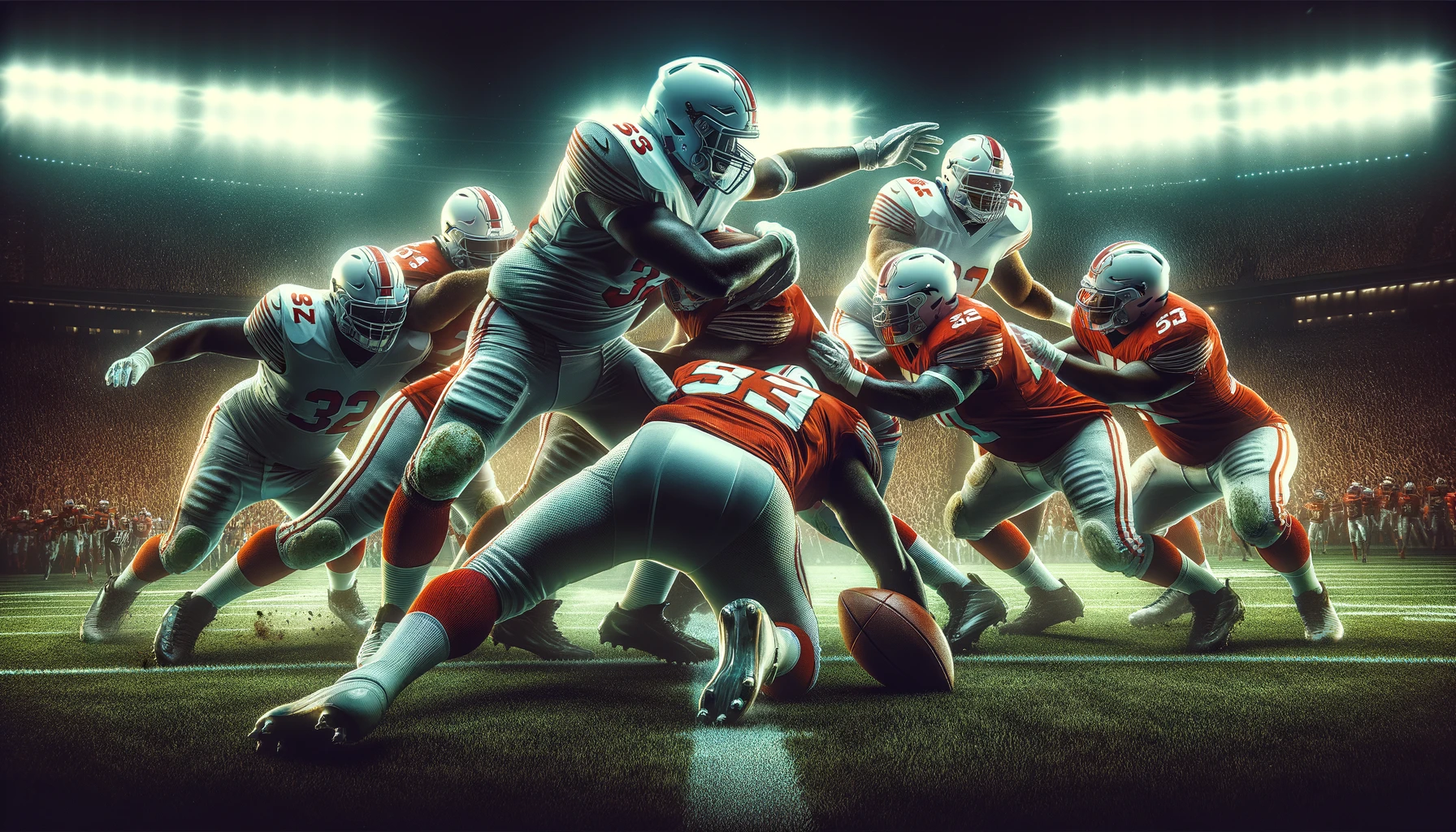In American football, the term “sack” stands out as a pivotal action that can significantly shift the momentum of a game.
This concept, deeply rooted in the sport’s fabric, represents a moment where defense overpowers offense in a clear display of skill, strategy, and strength. But what exactly sack is, and why is it such a celebrated event on the field.
This article closer look into what is a sack in football and the essence of the sack, exploring its impact on the game, the players involved, and its historical significance.
For enthusiasts and newcomers alike, understanding the sack offers a richer appreciation of football’s complexities and the sheer athleticism displayed by its players.
What is a Sack in Football?
A sack occurs in American football when a quarterback is tackled behind the line of scrimmage before he can throw a forward pass.
This defensive victory results in a loss of yards for the offensive team and is a testament to the defensive team’s ability to break through the offensive line and skillfully take down one of the most protected players on the field the quarterback.

The Origin of the Term “Sack” in Football
The term “sack” was popularized by Hall of Fame defensive end Deacon Jones, who envisioned the act of sacking a city breaking down its defenses and causing chaos.
This imagery perfectly encapsulates what happens during a sack in football, where the defensive line penetrates the offensive’s stronghold to tackle the quarterback, disrupting the play and forcing a loss of yardage.
Read Also: How Many Quarters In Football Game? American Football
How is a Sack Achieved?
Achieving a sack requires a combination of speed, strength, and strategic planning. Defensive players, often linemen or linebackers, must outmaneuver the offensive line tasked with protecting the quarterback.
The key is to exploit weaknesses in the offensive line, using various pass rush techniques to reach the quarterback and bring him down behind the line of scrimmage.
The Impact of a Sack on Game Strategy
Sacks play a critical role in the overall strategy of a football game. They not only cause a loss of yards but also put the offensive team in a more challenging position for their subsequent plays.
Moreover, sacks can significantly affect the morale and rhythm of the offensive team, especially the quarterback, potentially leading to hurried throws or mistakes in future plays.
Legendary Sack Leaders in NFL History
Throughout NFL history, certain players have distinguished themselves as formidable sack artists, turning the act of sacking the quarterback into an art form.
These players, known for their relentless pursuit and ability to change the course of a game, have etched their names into the record books and left an indelible mark on the sport.
The Difference Between a Sack and a Tackle
While tackles are a common defensive action occurring across the field, sacks are a specialized form of tackle with specific criteria: the quarterback must be tackled behind the line of scrimmage before executing a forward pass.
This distinction is crucial not only for statistical accuracy but also for appreciating the strategic depth and defensive skill involved in performing a sack. It underscores the tactical victory achieved by the defense in successfully neutralizing one of the most pivotal offensive plays in football.

Notable NFL Sack Records
The NFL’s annals are filled with remarkable sack records that highlight the exceptional talent and tenacity of defensive players.
From single-season sack records to career milestones, these achievements showcase the enduring legacy of the NFL’s most dominant defensive forces.
Read Also: What Is A TFL In Football And Why It’s An Important Statistic?
The Role of the Quarterback in Avoiding Sacks
Quarterbacks play a pivotal role in evading sacks through quick decision-making, mobility, and awareness.
Understanding the strategies quarterbacks use to avoid sacks provides insight into the cat-and-mouse game between offense and defense that lies at the heart of football.
The Evolution of Sack Tactics in Football
The strategies and techniques employed to achieve sacks have evolved alongside the game of football itself, reflecting changes in playing styles, the introduction of new rules, and advances in player training and preparation.
This evolution underscores the continuous innovation within the sport, as teams and players adapt to the ever-changing competitive landscape, seeking new ways to achieve success on the field.

Sacks and Safety: Ensuring Fair Play
While sacks are celebrated for their impact on the game, player safety remains paramount. The NFL has implemented rules to protect quarterbacks and ensure that sacks are executed in a manner that minimizes the risk of injury, underscoring the league’s commitment to fair play and the well-being of its athletes.
Summary- What is a Sack in Football?
The sack in American football is a pivotal moment where defense triumphs over offense, illustrating the blend of skill, strategy, and teamwork. It’s more than just a tackle it’s a strategic victory that impacts the game’s momentum and showcases the defense’s ability to penetrate the offensive line.
The evolution of sack tactics mirrors the dynamic nature of football, adapting to new playing styles, rules, and advancements in player development. Legends like Deacon Jones have enriched football’s history, making the sack a critical and celebrated aspect of the sport.
As football evolves, the commitment to player safety and fair play ensures that the sack remains a crucial, yet carefully regulated, component of the game, balancing aggression with the well being of its players.
QNA
Q: What is a sack in football?
A: A sack in football happens when a defensive player tackles the quarterback (QB) behind the line where the play starts, before the QB can throw a pass.
Q: Can a sack lead to a fumble?
A: Yes, a sack can lead to a fumble if the quarterback drops the ball when he’s tackled. This can give the defensive team a chance to take control of the ball.
Q: What does QB stand for in football?
A: In football, QB stands for quarterback, who is the leader of the offensive team and is responsible for throwing passes to other players.
Q: What’s the difference between a passer and a quarterback?
A: A passer and a quarterback refer to the same position; however, “passer” can specifically emphasize the quarterback’s role in throwing the football, while “quarterback” encompasses all responsibilities of the position, including leadership and play-calling.

Mark Wilson is a sports writer who loves to share stories about different sports like baseball and soccer. He grew up in Chicago, USA, and always enjoyed watching and playing sports.





